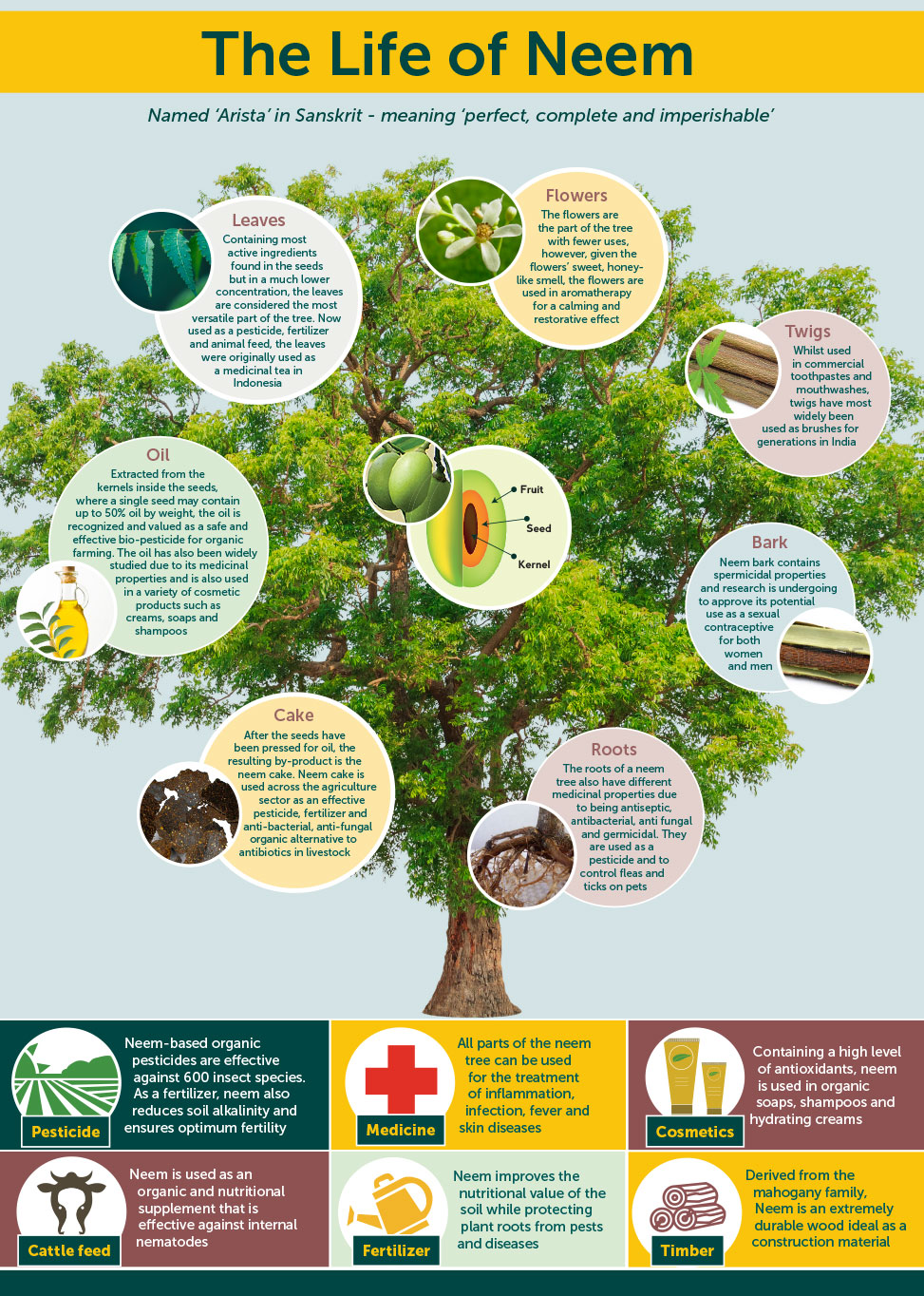Neem Crops
The neem tree, identified by the United Nations as the “tree of the 21st century, is renowned for its contributions to sustainable agriculture as well as for its applications in the medicinal, pharmaceutical and cosmetic industries worldwide.
In Sanskrit, Neem is called ‘Arista’, meaning ‘perfect, complete and imperishable.’ An evergreen, and part of the mahogany family, Neem is indigenous to Southeast Asia. Reaching up to 100 feet (30 meters) tall, growing around 2.6 feet (80cm) per year. Even in the harshest of environments, a fully mature tree bears up to 50kg of fruit each year. The wide canopy forms a rounded crown of leaves, and produces small, green fruit and delicate white flowers.
Neem Brief
 Neem trees have been a feature of community life throughout Asia for centuries, recognized and utilized for their anti-bacterial, antiviral, anti-fungal, antiseptic and anti-parasitic properties.
Neem trees have been a feature of community life throughout Asia for centuries, recognized and utilized for their anti-bacterial, antiviral, anti-fungal, antiseptic and anti-parasitic properties.
While research into neem has been underway in India since the 1920s, it was only in 1959 that a German entomologist in Sudan noticed that a locust plague ravished all in its path with the exception of neem trees. Fast-forward to the present day and a number of significant compounds have been discovered – the most significant of which is azadirachtin, a biodegradable and non-toxic insecticide that disrupts the growth cycle of insects – deters them from feeding on plants – cementing the tree’s place as an organic alternative to environmentally dangerous agrochemicals.
An evergreen tree and part of the mahogany family, neem can thrive in many climates and soil conditions for up to 200 years. Dubbed as ‘The Tree of the 21st Century’ by the United Nations, the neem tree offers solutions where we need it the most- across agriculture, healthcare and environmental protection.
The Organic Alternative for Crop Protection
At a utilitarian level, neem offers an cost effective and nontoxic alternative to a number of synthetic pesticides. Effective against more than 500 species of insects, neem oil acts on the hormonal systems of pests and therefore does not lead to the development of resistance in future generations. The ability to use neem as a natural pesticide that also boosts soil health will have a long-term positive impact on farmers and their farmland, whether or not they cultivate crops organically.
A Safeguard for Global Health
150 compounds have been isolated from the neem tree to date and extensive research is currently underway to fully understand the many applications and benefits to modern medicine and personal healthcare. While treatments for malaria, diabetes and cancer are particular areas of interest, neem has already proven itself as a powerful and effective all-natural cosmetic.
One Powerful Solution in Environmental Protection
The very nature of neem makes the tree ideal for reforestation and carbon sequestration efforts. Fast growing, with a large surface biomass and thick foliage, neem has an impressive capacity to capture carbon in the atmosphere with a sequestration capacity of 12.27 tons per tree per year. One of the most resilient, hard wearing and durable timbers on the planet, neem is an obvious choice for protecting and restoring the environment through long-term carbon entrapment.
